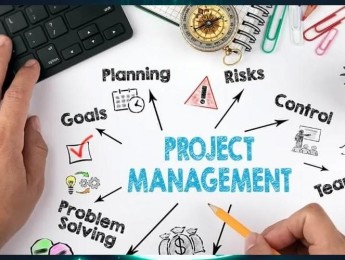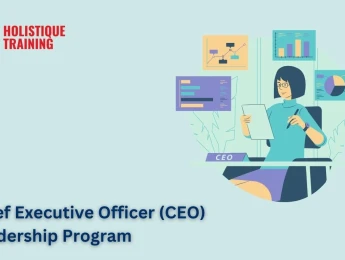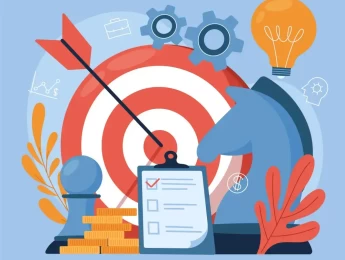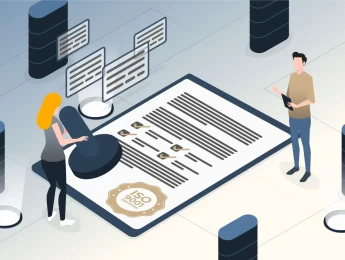Strategic leadership is a dynamic and forward-thinking approach to guiding an organisation toward its long-term goals and objectives. It involves envisioning a compelling future for the company and articulating a clear vision that inspires and motivates others. Strategic leaders deeply understand the organisation's internal dynamics and possess keen insights into the external business environment.
They adeptly analyse market trends, industry shifts, and emerging opportunities, allowing them to make informed decisions that align with the company's strategic direction. Strategic leadership involves fostering a culture of innovation, adaptability, and continuous improvement within the organisation. Successful strategic leaders excel in effective communication, collaboration, and stakeholder engagement, ensuring the entire team is aligned and committed to achieving the shared vision.
Through strategic leadership, organisations can navigate challenges, capitalise on opportunities, and position themselves for sustainable success in an ever-evolving business landscape.
Upon completion of this course, participants will be able to:
- Formulate a robust strategy for attaining business objectives.
- Understand the significance of emotional intelligence in leadership roles.
- Acquire a practical leadership toolkit for immediate application.
- Cultivate a more dynamic approach by enhancing strategic creativity.
- Expand comprehension of corporate culture to enhance influence.
- Enhance persuasion and influencing skills for strategic goal achievement.
- Acquire insights into the key functions of strategic leadership.
- Make strategic decisions in complex and challenging environments.
- Tailor leadership style to align with organisational and team needs.
- Proficiently create an empowering organisational culture.
- Apply cutting-edge strategic tools for impactful outcomes.
- Effectively lead and manage change within teams and organisations.
- Address both transformational and incremental changes.
- Communicate messages with lasting impact.
This course is designed for anyone responsible for managing a department or making strategic changes within a company to enable continuous improvement. It would be most beneficial for:
- Executives
- Business Owners
- Department Leaders
- Directors
- Operations Managers
- Project managers
- PR Professionals
- Public Speakers
This course uses a variety of adult learning styles to aid full understanding and comprehension. Participants will conduct role-playing activities to develop their persuasion and negotiation techniques and work in groups on a project proposal to gain buy-in for a large project.
They will review various technological solutions and well-tested techniques to plan projects and show a comprehensive return on investment and evaluation structure to aid project approval.
Day 5 of each course is reserved for a Q&A session, which may occur off-site. For 10-day courses, this also applies to day 10
Section 1: Becoming a Strategic Leader
- Strategic thinking and decision-making.
- Visionary leadership in a dynamic business environment.
- Crafting and communicating a compelling organisational vision.
- Aligning team goals with overall strategic objectives.
- Navigating change and fostering innovation.
- Building and leading high-performing teams.
- Effective stakeholder management and collaboration.
- Balancing short-term goals with long-term strategic vision.
- Continuous learning and adaptation in leadership roles.
Section 2: Developing the Power of Influence & Persuasion
- Principles of influence and persuasion in professional contexts.
- Effective idea presentation through structured thinking.
- Storytelling techniques for persuasive communication.
- Navigating organisational structures for key decision-maker buy-in.
- Confident interaction with the media: framing and delivering messages.
- Mastering public speaking techniques for audience engagement.
- Handling challenging questions with finesse.
Section 3: How to Present a Strategic Idea
- Crafting and delivering strategic presentations.
- Effective communication of complex ideas.
- Utilising visual aids for impactful presentations.
- Engaging storytelling techniques in strategic communication.
- Tailoring presentations to different audience needs.
- Handling questions and challenges during strategic pitches.
- Incorporating structured thinking in strategic idea presentation.
- Gaining buy-in through persuasive presentation skills.
Section 4: Gaining Buy-In for Essential Projects
- Strategies for gaining buy-in from stakeholders.
- Building a compelling case for essential projects.
- Effective communication of project value and benefits.
- Stakeholder engagement and relationship-building.
- Overcoming resistance and addressing concerns.
- Crafting persuasive project proposals.
- Navigating organisational dynamics for project approval.
- Demonstrating alignment with strategic objectives.
- Building consensus for successful project implementation.
Section 5: Considering Budgeting
- Fundamentals of budgeting for effective financial management.
- Creating and managing budgets in various organisational contexts.
- Aligning budgets with strategic goals and priorities.
- Monitoring and controlling budgetary performance.
- Cost estimation and forecasting techniques.
- Developing budget proposals for different business scenarios.
- Budget communication and collaboration within teams.
- Adapting budgets to changing business environments.
- Evaluating the impact of budget decisions on overall organisational success.
Section 6: Using Technology & Media for Communication
- Leveraging technology for effective communication.
- Utilising media tools for impactful messaging.
- Strategies for digital communication in diverse contexts.
- Building an online presence and brand through media.
- Navigating social media for professional communication.
- Integrating multimedia elements for engaging content.
- Adapting communication for different technological platforms.
- Ethical considerations in technology-mediated communication.
- Enhancing organisational communication through technology and media.
Upon successful completion of this training course, delegates will be awarded a Holistique Training Certificate of Completion. For those who attend and complete the online training course, a Holistique Training e-Certificate will be provided.
Holistique Training Certificates are accredited by the British Assessment Council (BAC) and The CPD Certification Service (CPD), and are certified under ISO 9001, ISO 21001, and ISO 29993 standards.
CPD credits for this course are granted by our Certificates and will be reflected on the Holistique Training Certificate of Completion. In accordance with the standards of The CPD Certification Service, one CPD credit is awarded per hour of course attendance. A maximum of 50 CPD credits can be claimed for any single course we currently offer.
- Course Code MG2-181
- Course Format Classroom, Online,
- Duration 5 days














